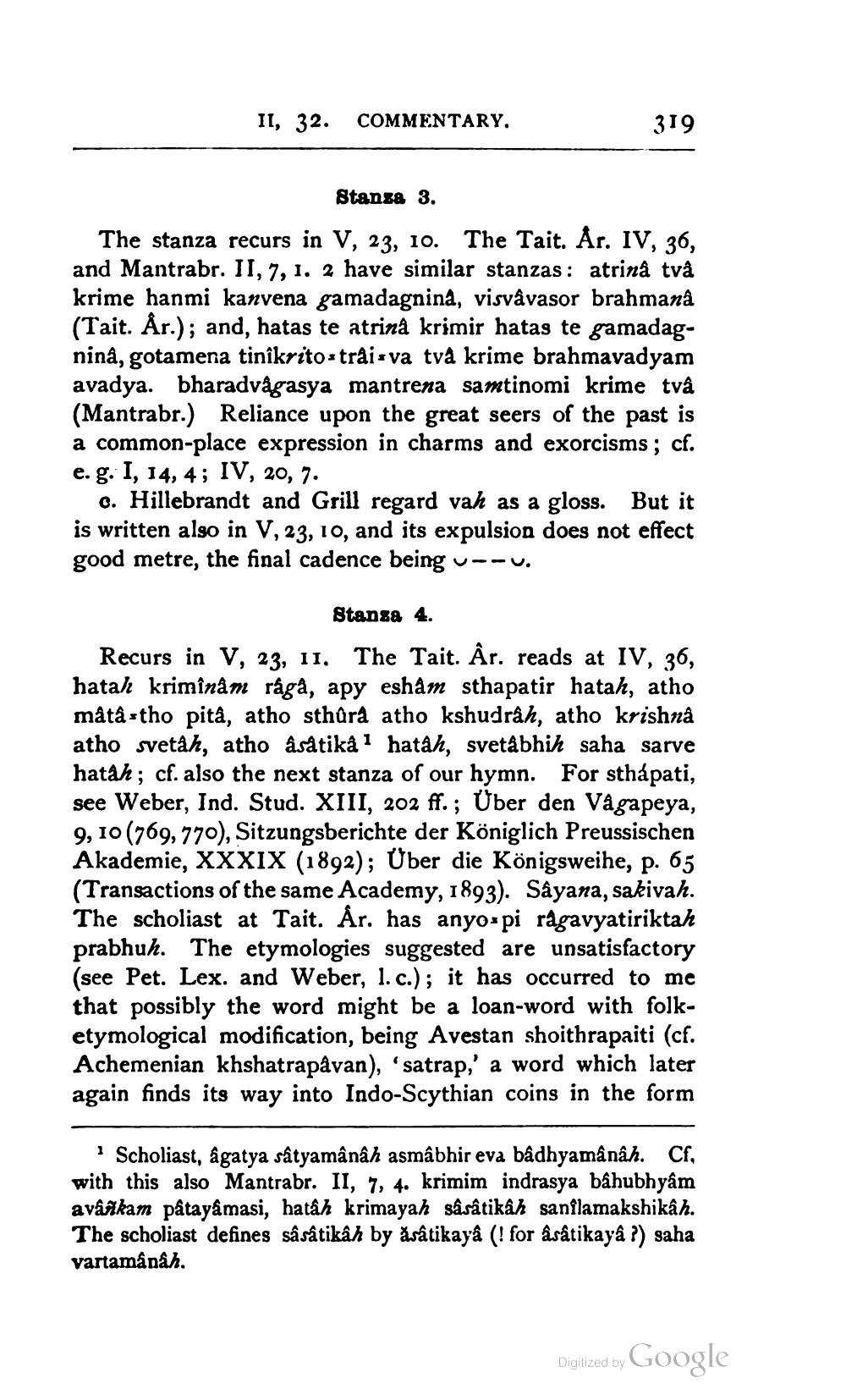________________
II, 32. COMMENTARY.
319
Stanga 3. The stanza recurs in V, 23, 10. The Tait. Ar. IV, 36, and Mantrabr. II, 7, 1. 2 have similar stanzas: atrinå två krime hanmi kanvena gamadagnina, visvävasor brahmana (Tait. År.); and, hatas te atrina krimir hatas te gamadagnina, gotamena tinikritostrâis va två krime brahmavadyam avadya. bharadvågasya mantrena samtinomi krime två (Mantrabr.) Reliance upon the great seers of the past is a common-place expression in charms and exorcisms; cf. e. g. I, 14, 4; IV, 20, 7.
c. Hillebrandt and Grill regard vah as a gloss. But it is written also in V, 23, 10, and its expulsion does not effect good metre, the final cadence being v--u.
Stansa 4. Recurs in V, 23, 11. The Tait. År. reads at IV, 36, hatah kriminâm râga, apy eshâm sthapatir hatah, atho måtå -tho pita, atho sthûra atho kshudråh, atho krishna atho svetåh, atho åsåtika 1 hatáh, svetâbhih saha sarve hatah; cf. also the next stanza of our hymn. For sthápati, see Weber, Ind. Stud. XIII, 202 ff.; Uber den Vågapeya, 9, 10 (769, 770), Sitzungsberichte der Königlich Preussischen Akademie, XXXIX (1892); Über die Königsweihe, p. 65 (Transactions of the same Academy, 1893). Sâyana, sakivah. The scholiast at Tait. År. has anyos pi ragavyatiriktah prabhuh. The etymologies suggested are unsatisfactory (see Pet. Lex. and Weber, 1.c.); it has occurred to me that possibly the word might be a loan-word with folketymological modification, being Avestan shoithrapaiti (cf. Achemenian khshatrapavan), 'satrap,' a word which later again finds its way into Indo-Scythian coins in the form
Scholiast, agatya sâtyamânâh asmábhir eva bâdhyamânâh. Cf, with this also Mantrabr. II, 7, 4. krimim indrasya bâhubhyâm avátkam patayâmasi, hatah krimayah sâsâtikah sanflamakshikâh. The scholiast defines sâsâtikâh by ăsâtikayâ (! for åsâtikayâ ?) saha vartamânâh.
Digized by Google




